Hand-Torn Cabbage Stir-Fry (Shousi Baocai)
A simple vegetable dish with a bit heat and smokiness
Despite being an omnivore and sharing a streak of meat recipes recently—many of which can also be prepared without meat—I consume a significant amount of vegetables. For every Chinese or Asian-inspired meal, even if it’s just a quick lunch for one, I always include a vegetable component. This could be a cucumber salad, a plate of stir-fried greens, or even a small plate of kimchi. While the seasonal vegetables at my local farmer’s market may not always be particularly exciting, I have been enjoying locally grown pointed cabbage. Compared to the dense German white cabbage, pointed cabbage is tender, crisp, and reminds me of the green cabbage I used to eat in China.
Green cabbage goes by many names in Chinese, but my favorite is the somewhat poetic one: lotus cabbage (linahuabai, 莲花白)1. In Sichuan, this affordable and ubiquitous vegetable is typically prepared in a quick stir-fry with spices and aromatics. The cooking method, is known as qiang chao, 炝炒, translated to aromatic stir-fry or spicy stir-fry. It’s perfect for leafy vegetables: you start by frying dried chilies and Sichuan peppercorns briefly in hot oil to release their subtle flavor and aroma before adding the vegetables. Here, qiang (炝)2 itself means infusing the aroma (in my opinion, similar to blooming spices), which can also be used in dressing cold dishes, such as this soy-vinegar pickled cucumber, or think taking it a bit further to scorch the chili as in Kung Pao chicken. 3
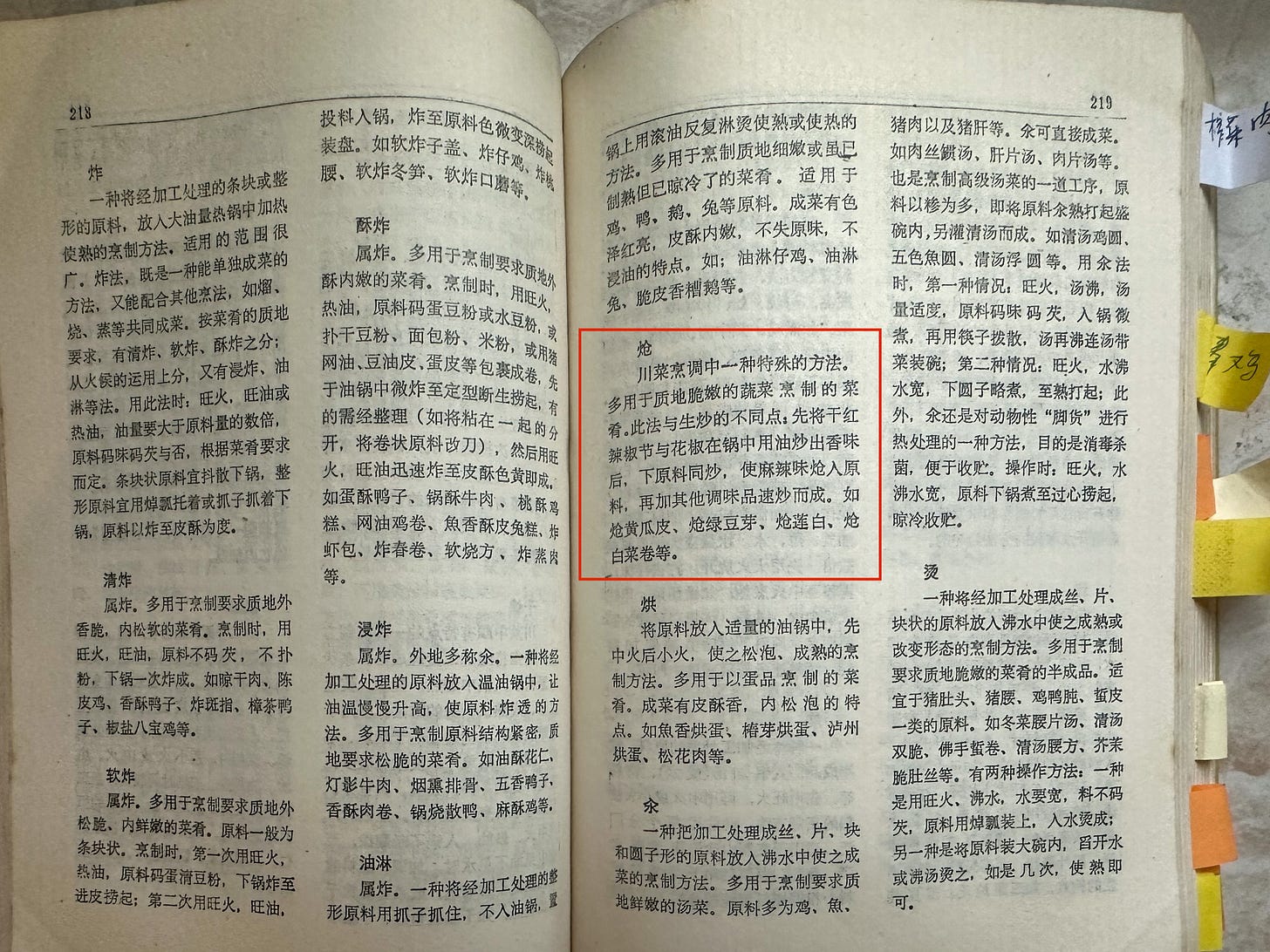
In comparison, there’s another stir-fry technique called qing chao (清炒, "mild stir-fry"), where only garlic is added (sometimes a splash of water). These two stir-fries are staples for cooking vegetables in both households and restaurants. In some Sichuan restaurants, you’ll sometimes see a menu item ambiguously labeled as “fried seasonal vegetables” (chao shishu, 炒时蔬). The waiter will tell you what’s in season, and you can choose whether to have it prepared spicy or mild. Some versions are seasoned with just a pinch of salt or MSG, while others might include a splash of soy sauce.
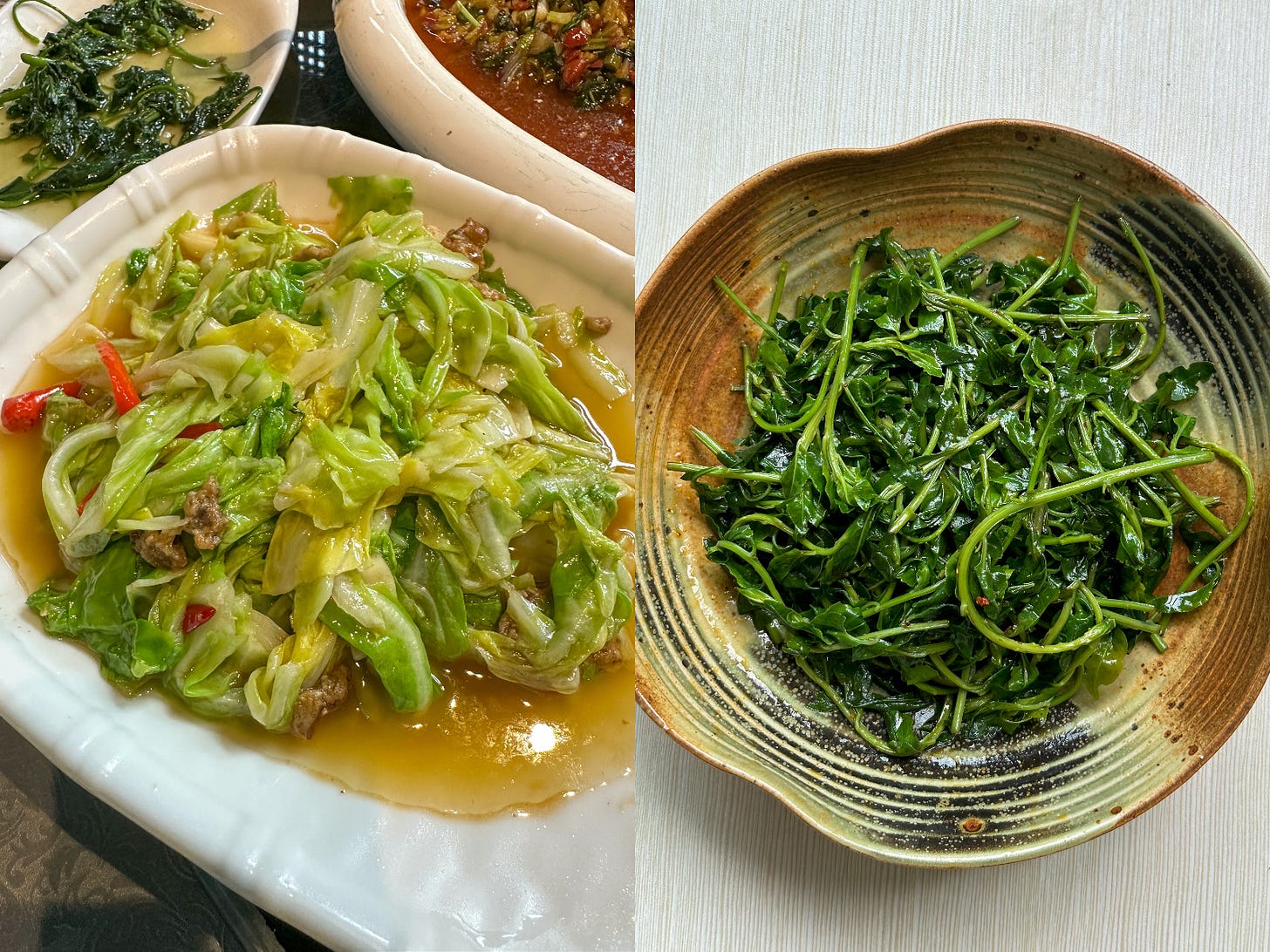
For this recipe, I’ve added a touch of sugar and black vinegar to round out the flavor, which pairs beautifully with cabbage. The seasoning is mild but flavorful, and tearing the cabbage leaves by hand creates more surface area for the sauce to cling to, which is deeply satisfying. In Chinese, this dish is called 炝莲白 (qiang lianbai) or 手撕包菜 (shousi baocai), and both versions are very similar. Some restaurants make the shousi baocai more substantial by adding pork belly, but I like the version with cured meat (here I used Italian pancetta). This qiang chao method just as well with other vegetables like bok choy, pea shoots, water spinach, or bean sprouts, adjusting the cooking time as needed.
Recipe: Sichuan Hand-Torn Cabbage Stir-Fry
Servings: 2
Ingredients
1/2 medium head of cabbage (weighs about 300 g / 10oz.)
50 g (1.7 oz) cured pork belly like pancetta or chinese la rou (vegan option below)
2 cloves garlic, thinly sliced
1 tsp Sichuan peppercorns
2 dried Chinese red chilies, deseeded and cut in half
2 tsp light soy sauce
1 tsp Chinese black vinegar (Chinkiang or Baoning)
1 tsp sugar
1 tbsp vegetable oil
Salt, to taste
Instructions
Separate the cabbage leaves and tear them into roughly palm-sized pieces using your hands. Discard the very tough stems. Wash and drain thoroughly.
In a small bowl, combine the light soy sauce, black vinegar, and sugar. Stir until well mixed and set aside.
Heat a wok over medium-high heat until hot, then reduce the heat to medium-low. Add the vegetable oil and cured pork. Cook for about 2-3 minutes, allowing the fat from the meat to render. Add the Sichuan peppercorns and dried chilies, stirring until they darken slightly and release their aroma. If you’re concerned about biting into the peppercorns, remove them from the wok at this point.
Increase the heat to medium-high to get your wok hot. Add the cabbage, seasoning with a pinch of salt. Work in batches if your pan is crowded. Use a spatula to press the cabbage against the wok for maximum contact with the hot surface. Stir-fry for 3–5 minutes, or until the cabbage is slightly wilted.
Pour the sauce mixture along the edges of the wok. Stir-fry for an additional 30 seconds to evenly coat the cabbage. Serve immediately with rice and other dishes.
Notes on Preparation
Vegan Option
Skip the cured meat altogether, or use smoked tofu here. If using smoked tofu, cut it into small cubes or thin slices, add to the wok after the chilies and Sichuan peppercorns are fragrant.
Types of Cabbage
Pointed (sweetheart) cabbage or tender green cabbage are ideal for this recipe, as they cook quickly and retain a satisfying crunch. However, you can easily substitute with other varieties, such as savoy, Napa cabbage, or white cabbage, depending on availability and preference.
Cured Pork
For the best results, use cured pork belly like Italian pancetta or Chinese cured pork belly (la rou 腊肉), as the rendered fat adds extra depth to the dish. Other good substitutes include German speck, thick-cut bacon, or thinly sliced inexpensive prosciutto.
If you don’t have a wok, a big enough carbon steel pan or stainless steel pan works just as well. The key is to use a pan that can handle high heat, as getting it hot enough is essential for this quick and hot stir-fry.
Another vegetable recipe from the archive:
Steamed Eggplant with Charred Pepper Sauce
Hi! This week we’re cooking a vegetable that I’ve overlooked for so long: eggplants.
In Chinese, cabbage can be called 卷心菜,圆白菜,包菜,高丽菜 etc.
Sometimes qiang also means blanching ingredients in water and dressing in aromatic oil
According to"Encyclopedia of Sichuan Cuisine" (《川菜烹饪事典》1994):“Qiang is a distinctive cooking technique in Sichuan cuisine, specifically designed to highlight the natural crispness and tenderness of vegetables. What sets this method apart from standard stir-frying is the crucial first step: dried chili peppers and Sichuan peppercorns are briefly fried in hot oil to release their bold, aromatic flavors.”




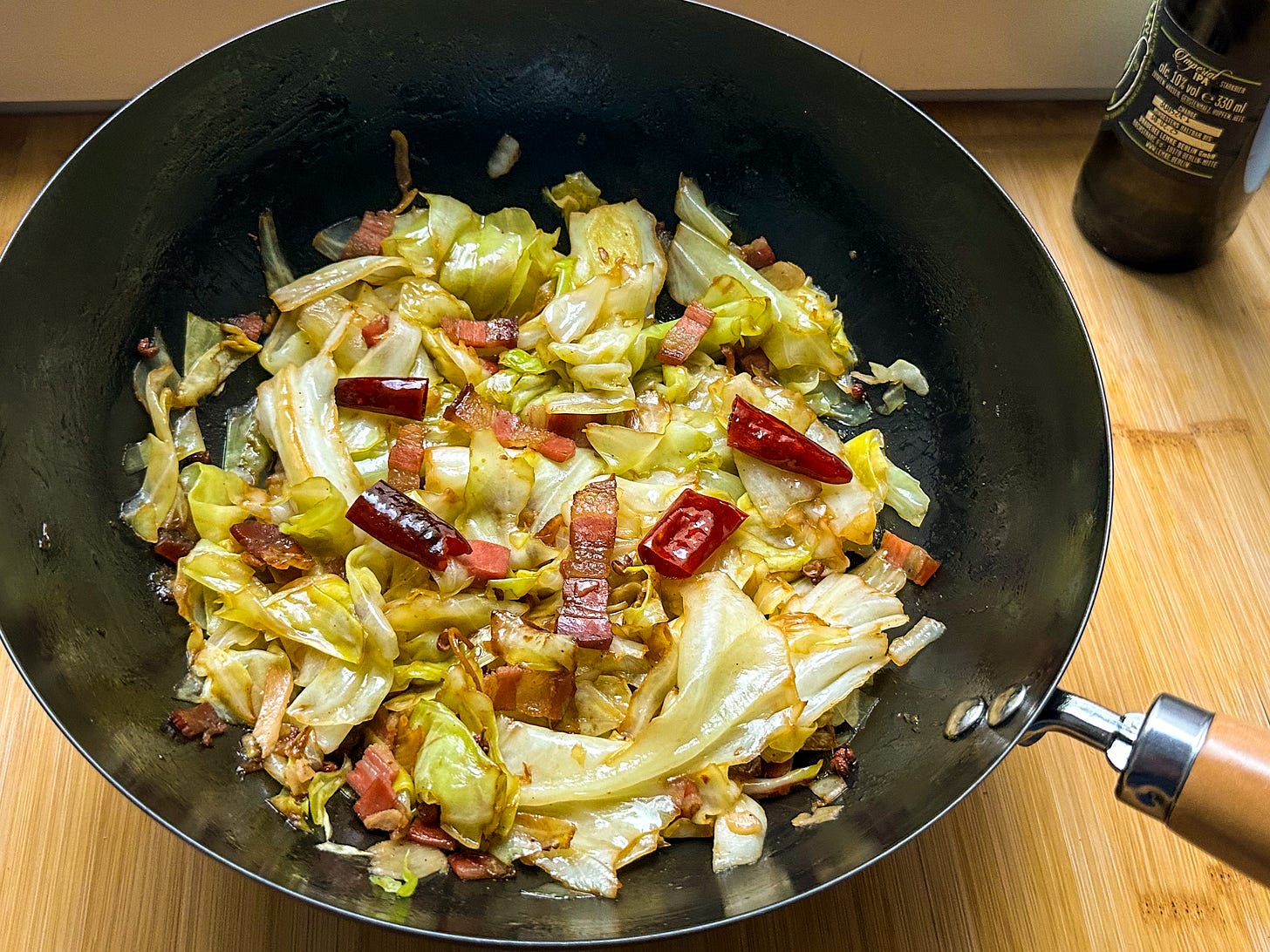
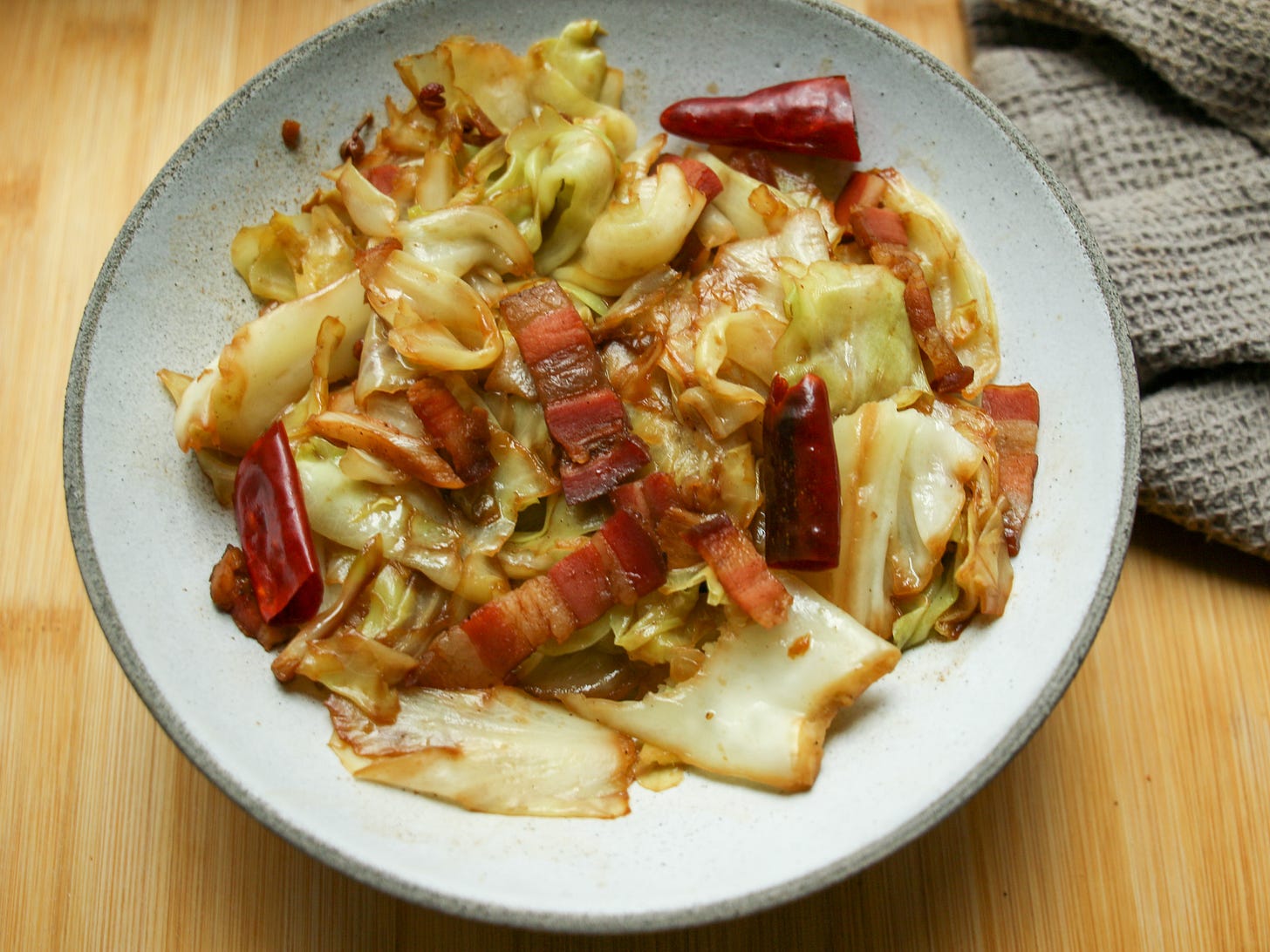

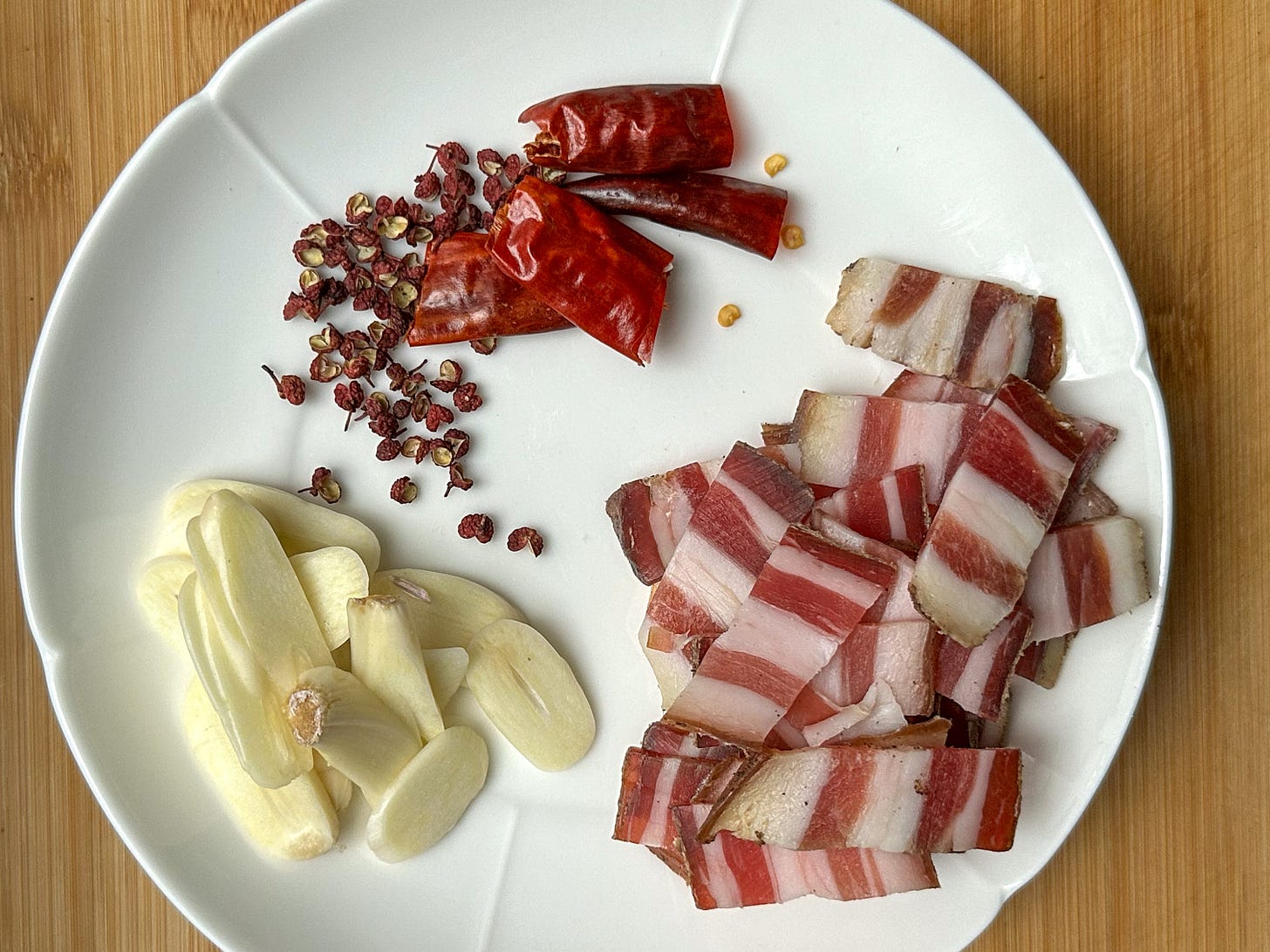
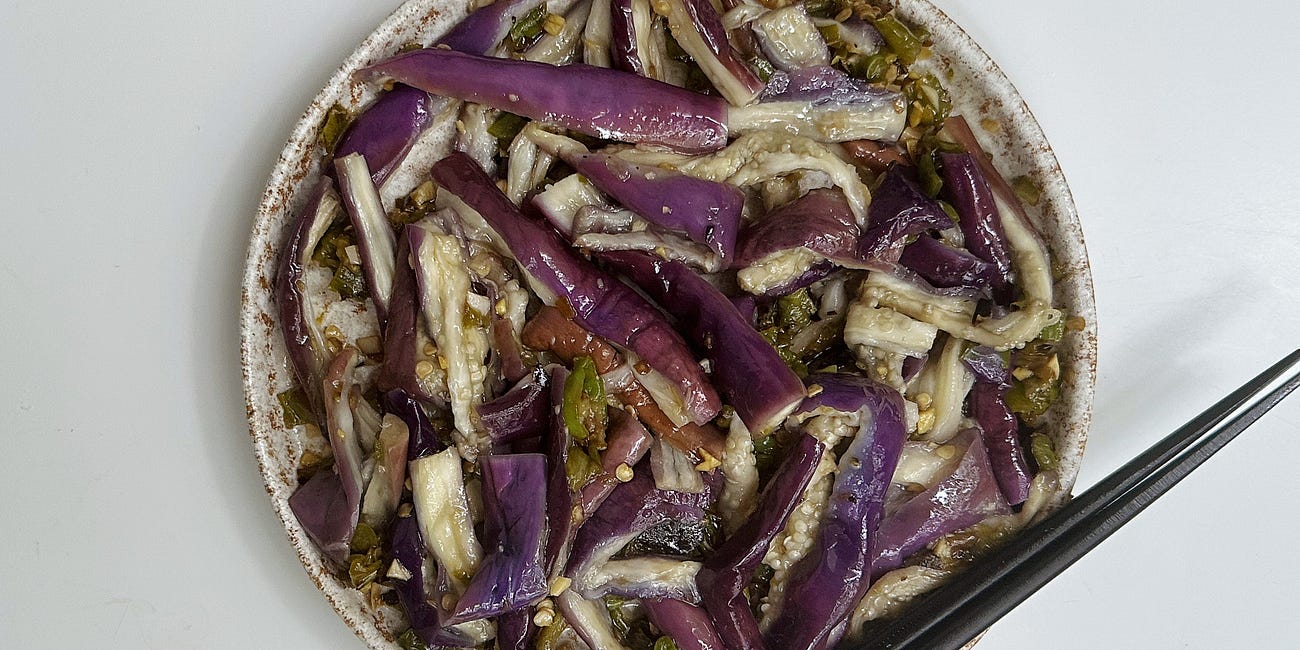
This cabbage dish is really good and super easy. I added the sliced garlic in when I added the cabbage. I used a chunk of the end of some prosciutto for the pork since I had it on hand - it had a nice layer of fat to render out.
I love spicy foods but the mild stir fry is also incredible and really nice compliment to something spicier served along side. Also, I made Mrs. Chiang's szechwan shaoz mian as my complimentary dish for dinner, along with a nice cold lager beer.